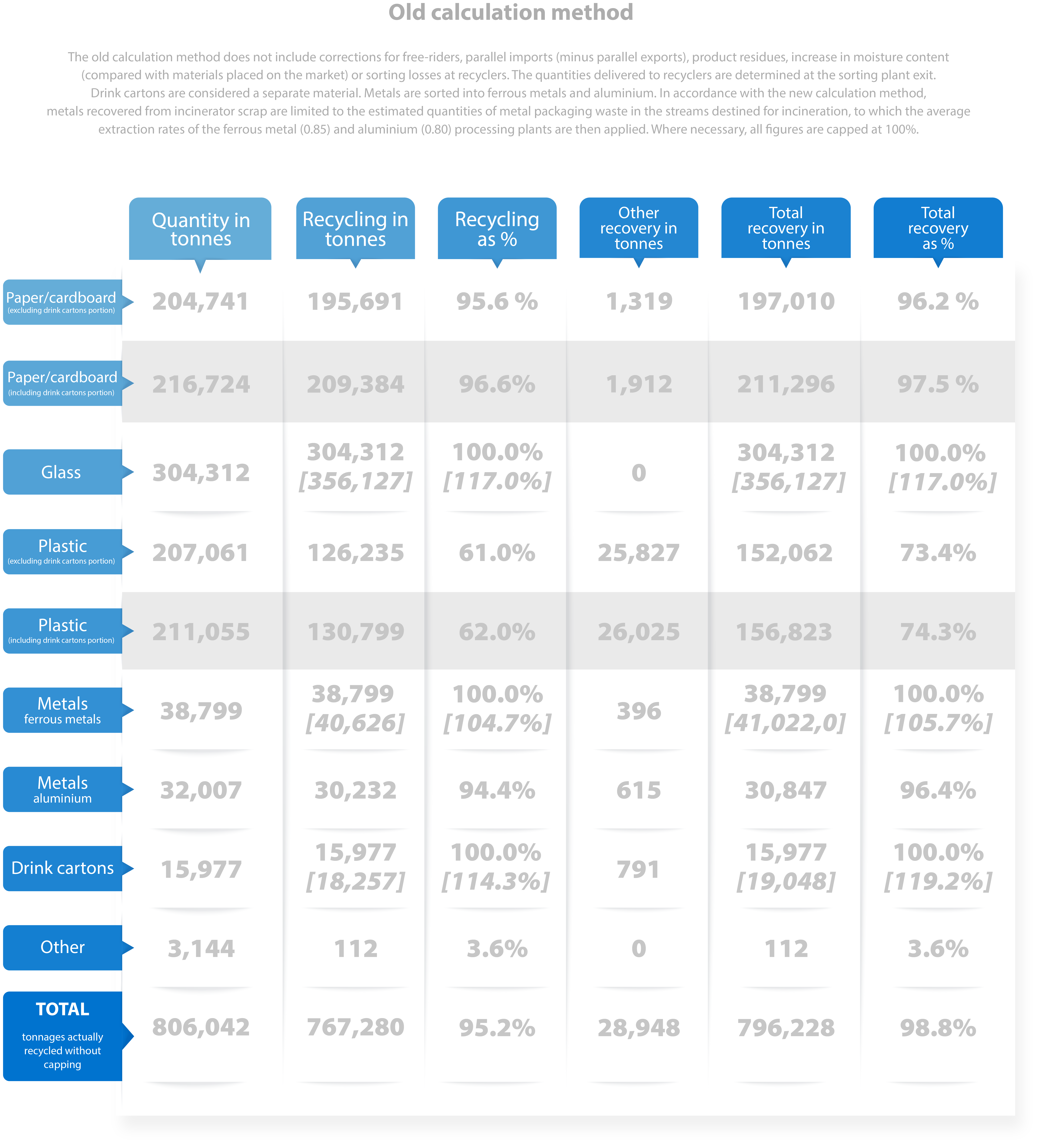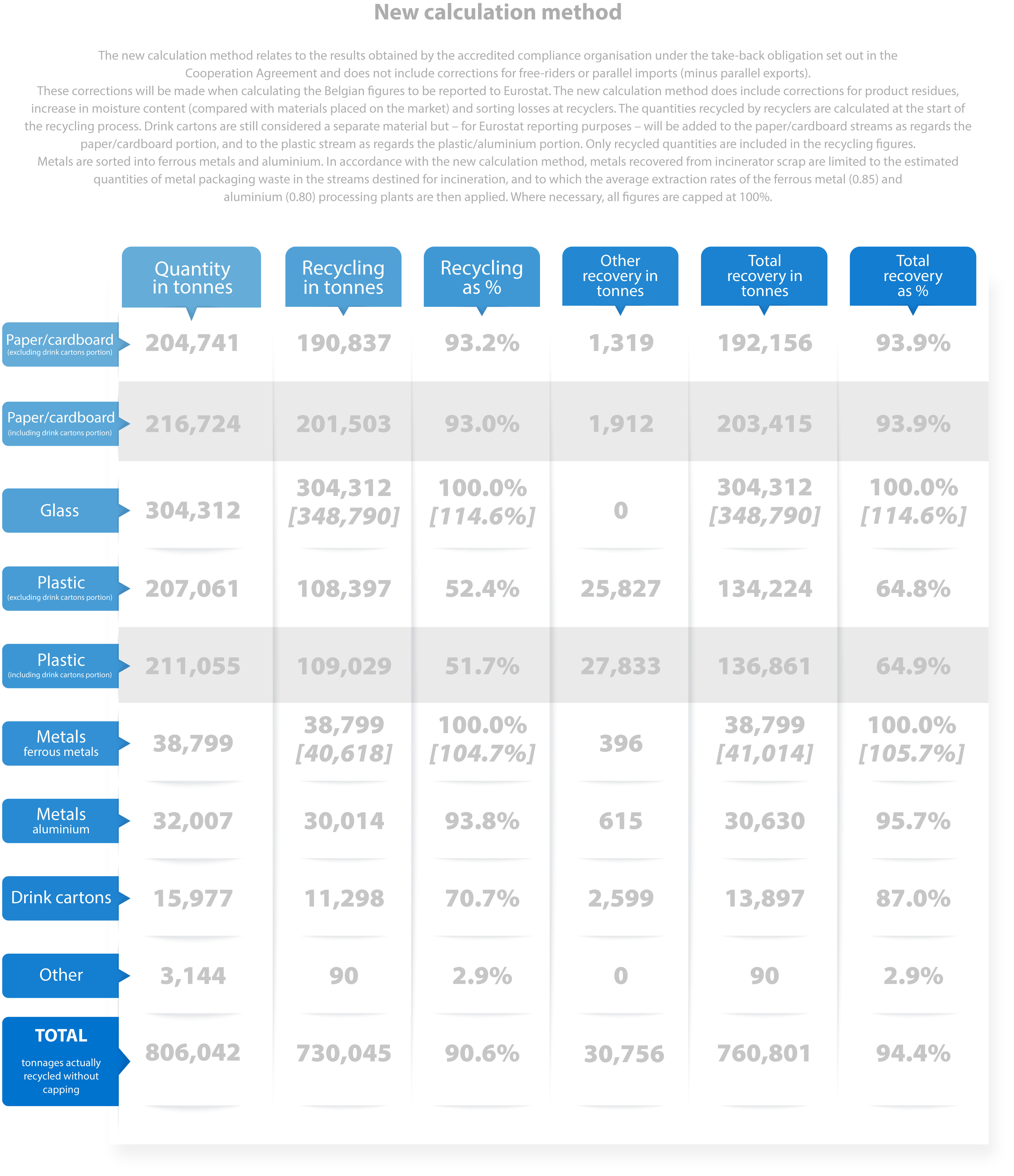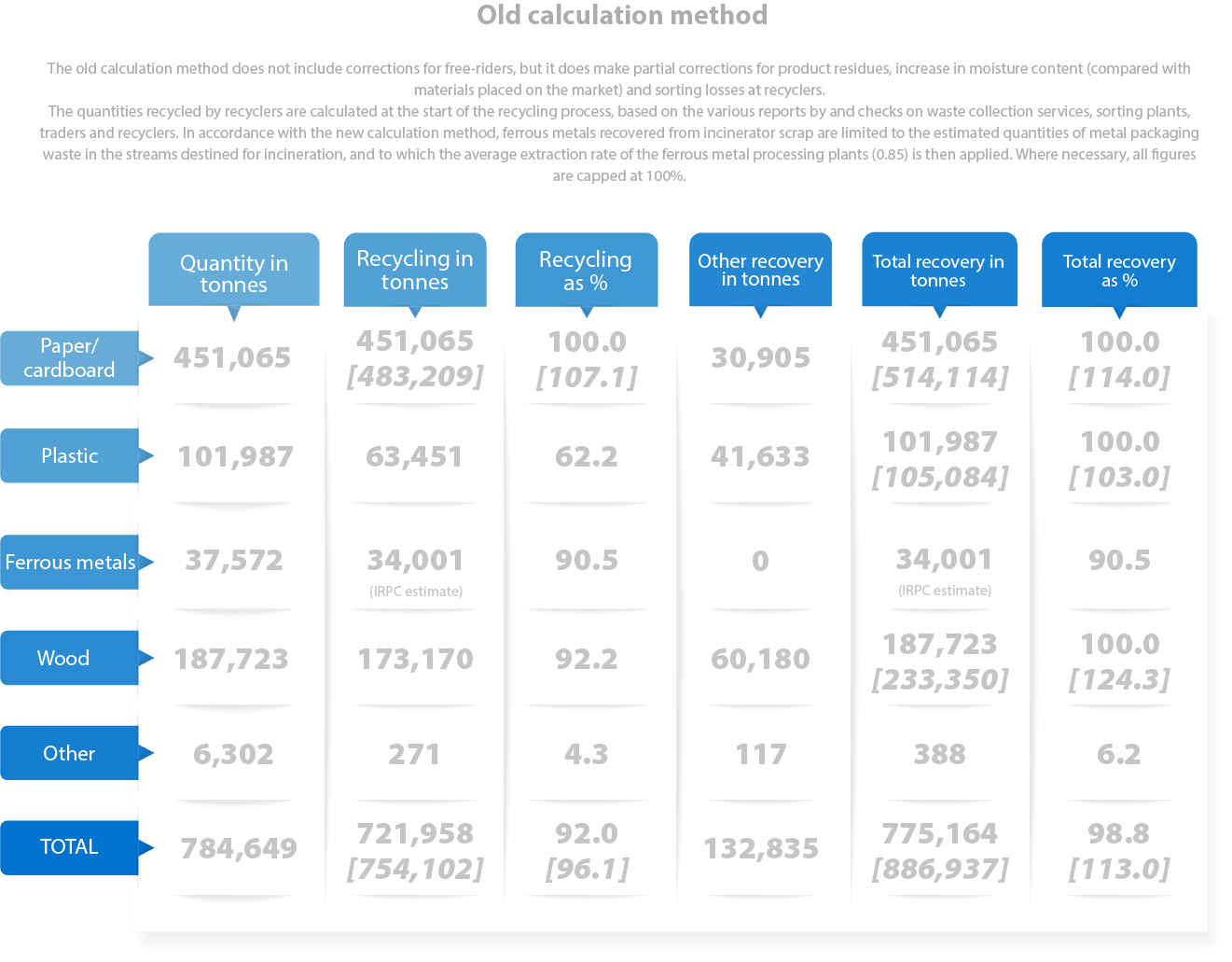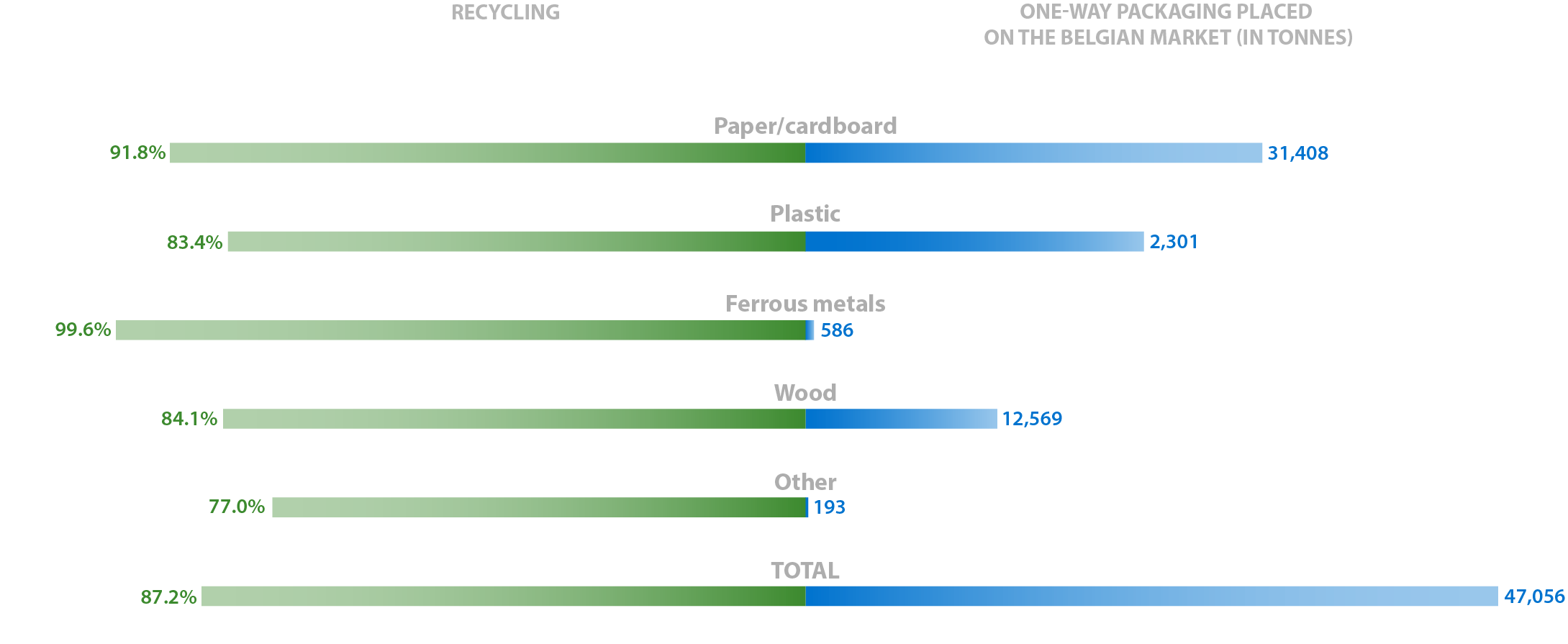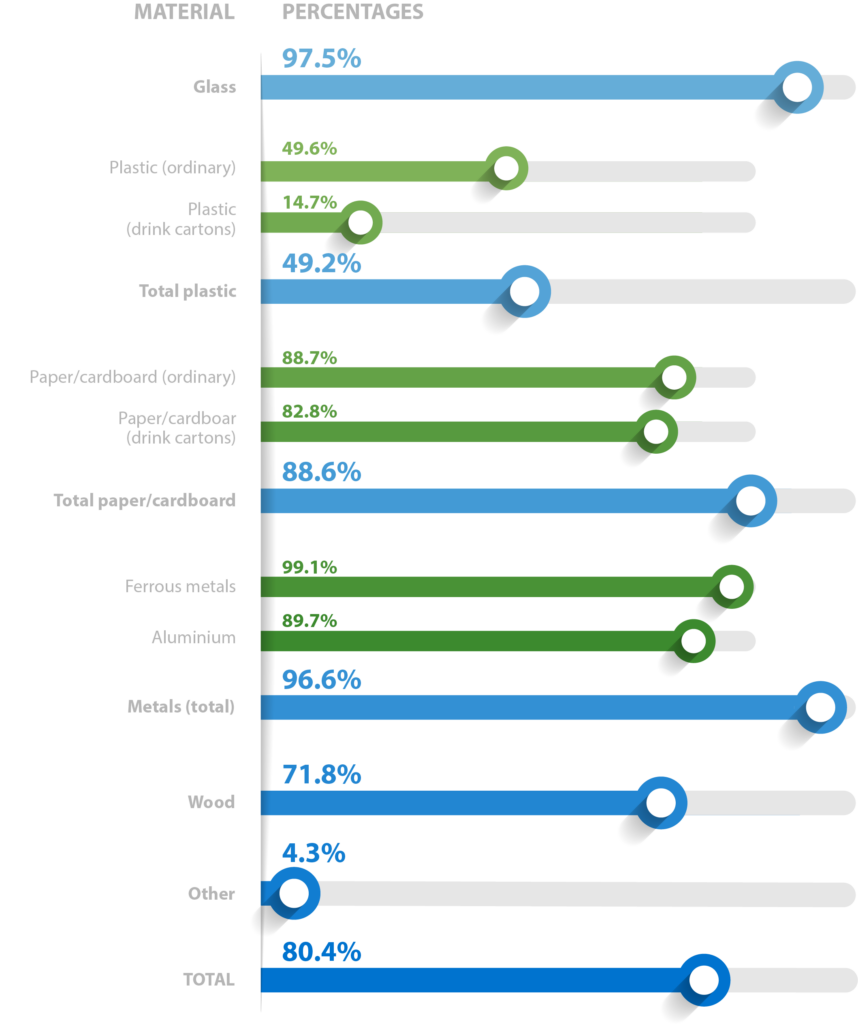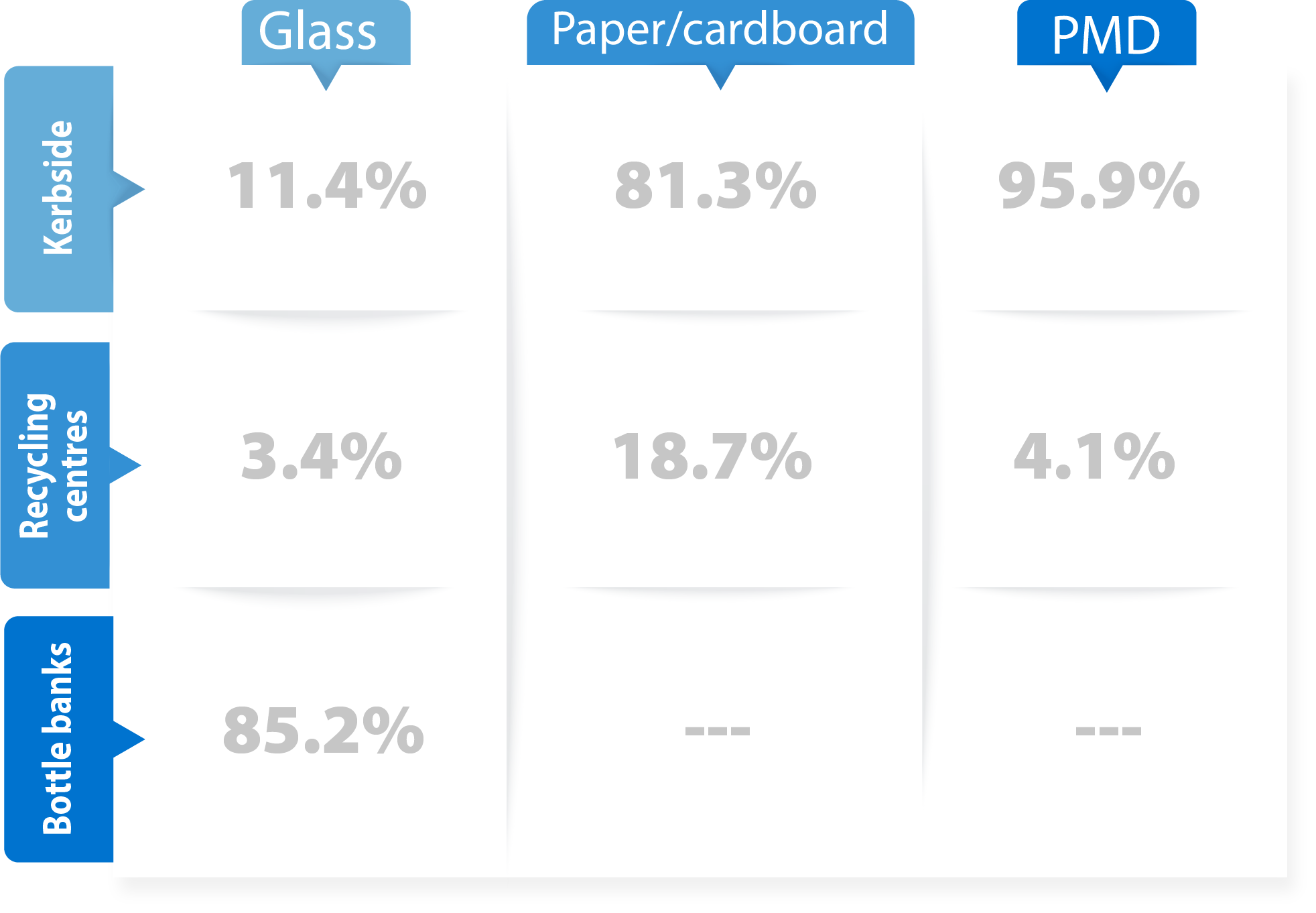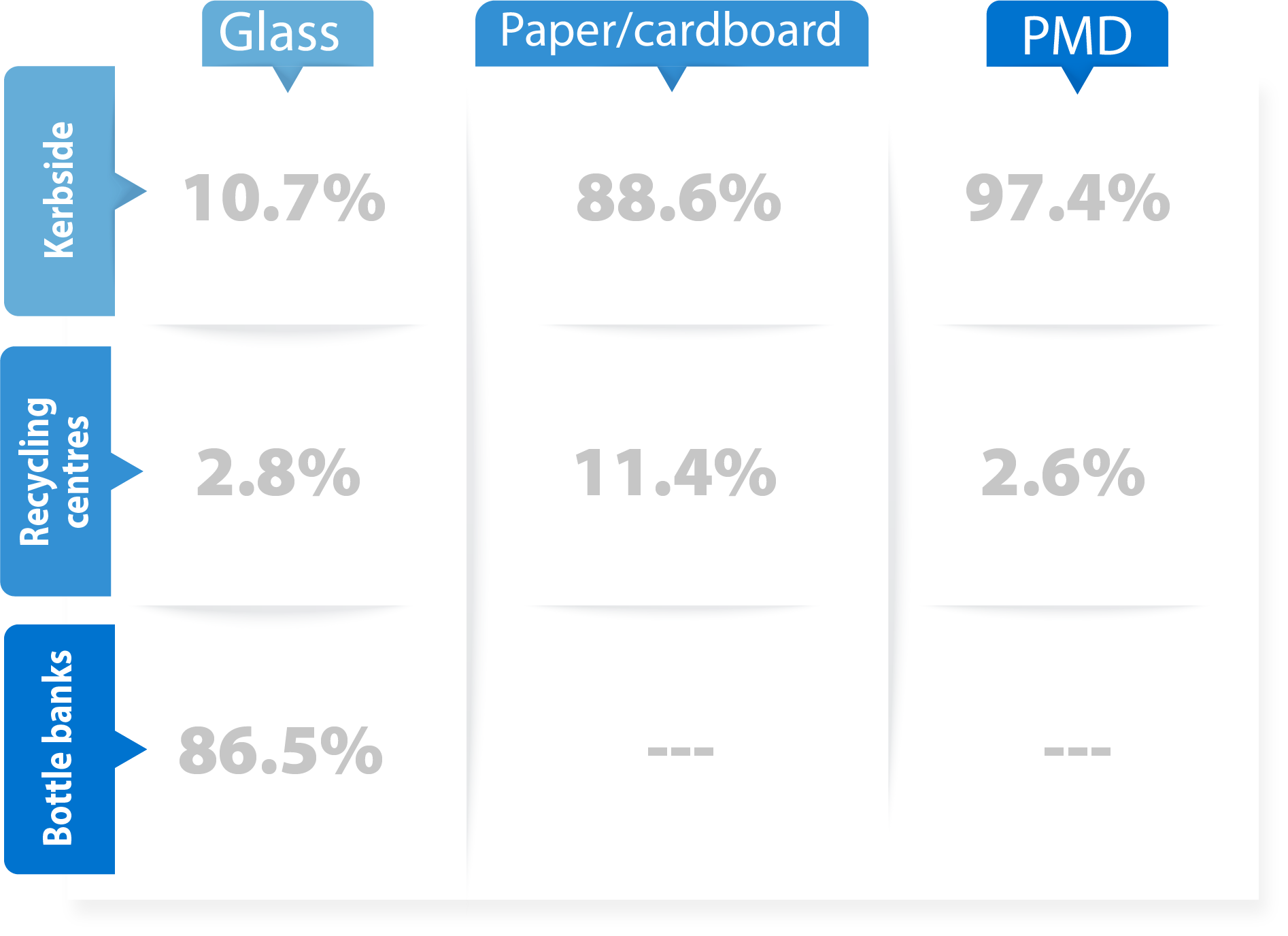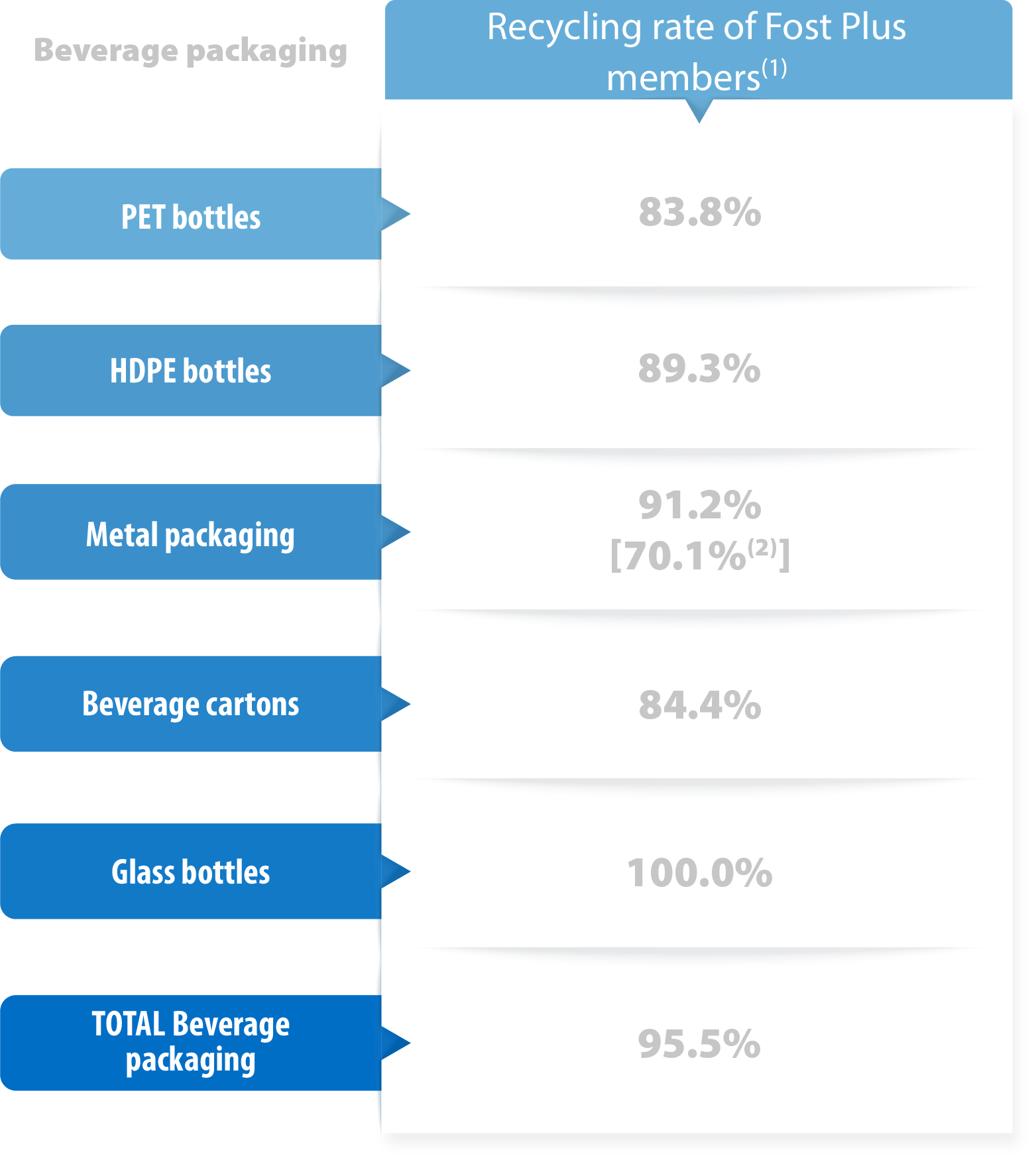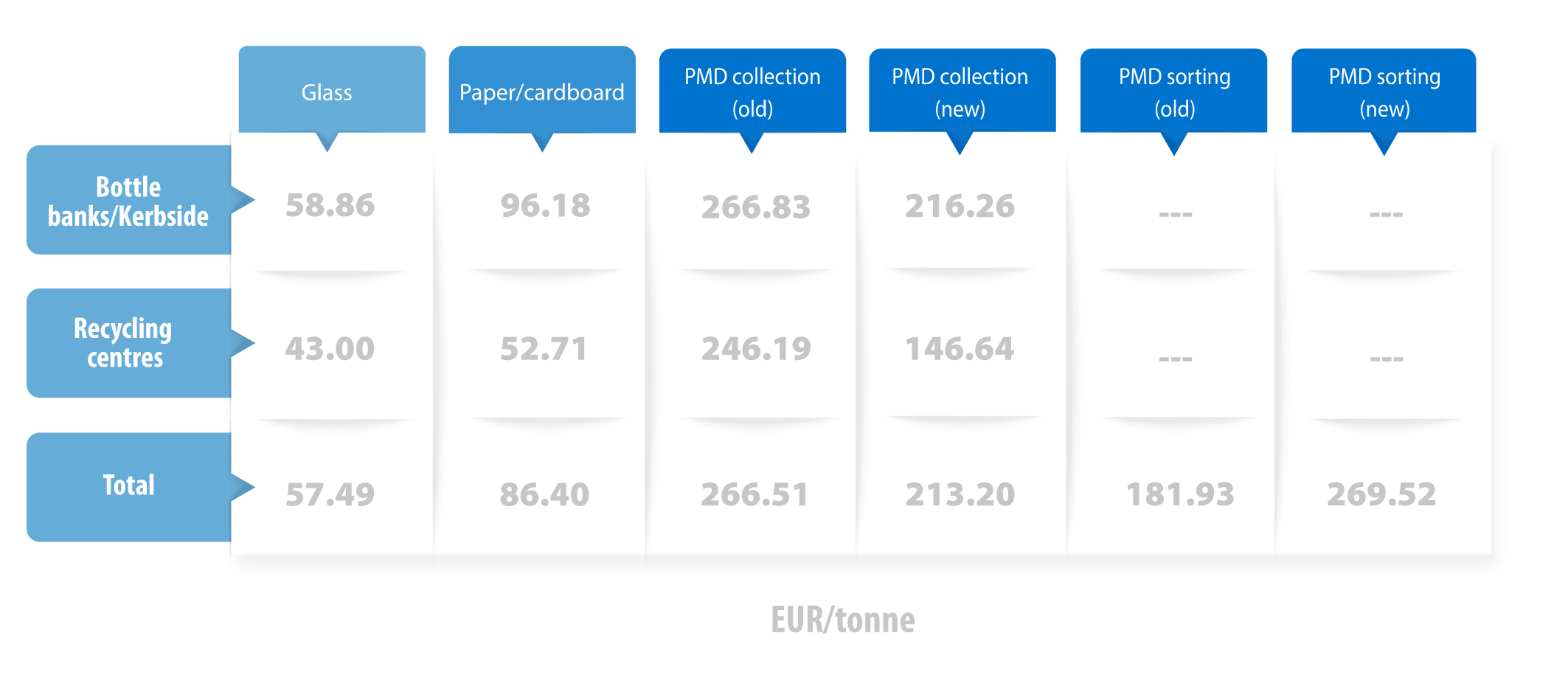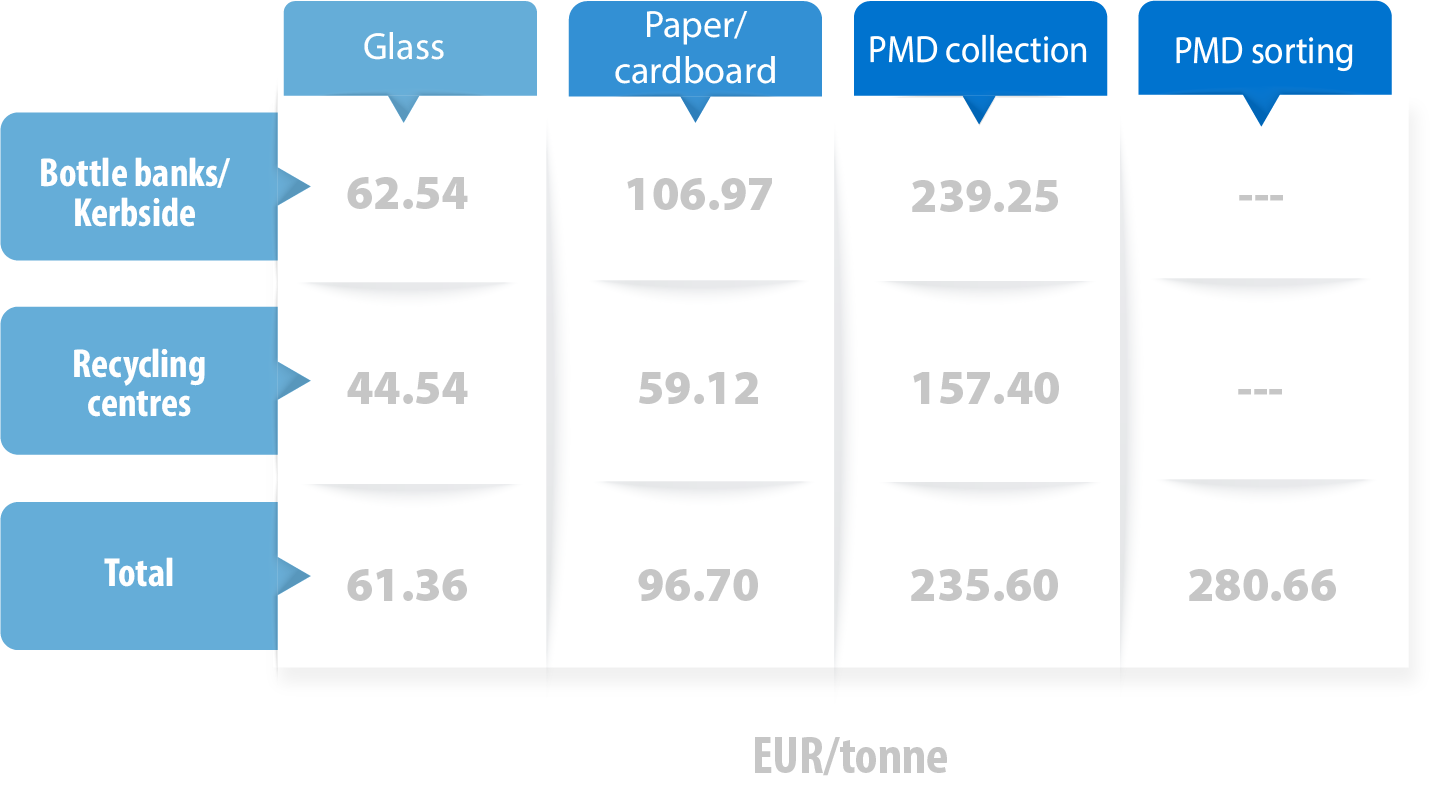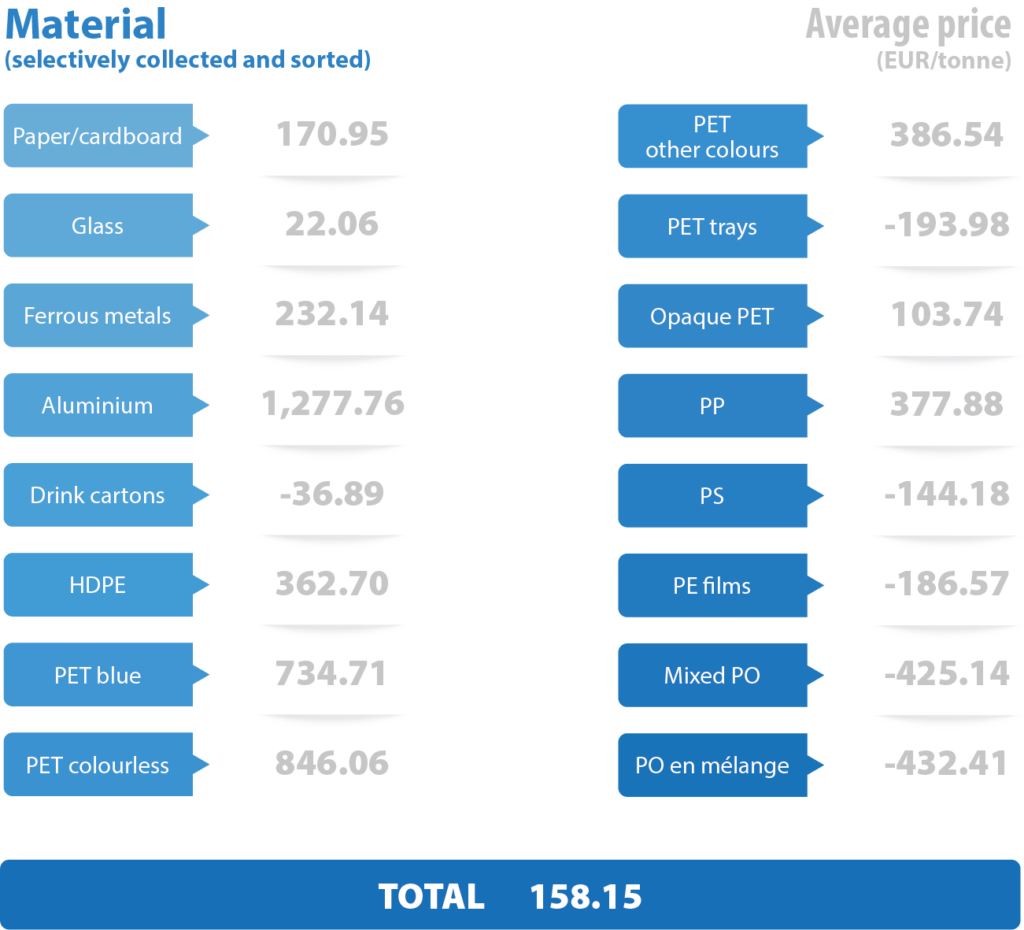Calculation method of Valipac and Fost Plus figures
If you look at the annual results of Fost Plus and Valipac, you will notice that two calculation methods are mentioned.
There are separate columns with different figures for recycling and recovery, in tonnes and percentages, and reference is made to an “old” and a “new” calculation method.
The reason for these double figures is that the method for calculating the European recycling targets was revised as from the 2020 reporting year. These are the recycling figures that Belgium and the other EU Member States must achieve, and it is important that they are worked out in the same way throughout Europe.
Overall results for Belgium
The overall results for Belgium are calculated using a European calculation method, which was completely revised as of 2020. The old European method applied up to the end of 2019 and was used to calculate the figures for that year. The new European method has applied to figures reported since the beginning of 2020.
To calculate the overall Belgian figures, only the applicable European calculation method has ever been used, without any adjustment. You will find these figures in Section 5.4.
Results of Fost Plus and Valipac
As from 2020, the way in which the European recycling targets are determined therefore changed. Starting that same year, the IRPC chose to adapt the internal Belgian method used to calculate the results of the accredited compliance organisations Fost Plus and Valipac to incorporate some of the principles of the new European method for calculating the European recycling targets; in other words, the results of Fost Plus and Valipac would be calculated according to this “new” method.
What is meant by “old” and “new” calculation methods?
The old method is more or less the same as before (up to the end of 2019), but it already incorporates some adjustments to the new European method for calculating Member States’ results. The new method follows the principles of the new European calculation method as closely as possible. In the longer term, only the latter method will be used. To illustrate the historical trend in the figures, the “old” and “new” figures will still both be shown for now.
Specifically, how has the “new” method for calculating the accredited compliance organisations’ results changed?
Corrections are made to tonnages (product residues, increased moisture content of paper/cardboard, etc.), in accordance with the European calculation method. These corrections are not necessary for some of Valipac’s results, as the calculation is based on “empty weights”.
For metals recovered from scrap, we apply a new European formula. This is stricter than our old formula, which used to be similar to that of neighbouring countries. Moreover, we also apply the new European formula in the “old” method for calculating the accredited compliance organisations’ results.
Drink cartons are divided by material, and metals are now separated into ferrous metals and aluminium.
Another point worth highlighting is that the European calculation method introduces a new measurement and calculation point, but this has relatively little impact on the Belgian figures: sorting residues were never included in the results and the sorted material streams have a high degree of purity, so they do not need to be further sorted by the recyclers.
Different objectives
The separate calculations (for the results of the accredited compliance organisations Fost Plus and Valipac, on the one hand, and for the overall Belgian results, on the other) will continue to co-exist, as each has different objectives.
- The method for calculating the results of the accredited compliance organisations presents these results in the context of the take-back obligation, and thus applies only for members of the accredited compliance organisations. The take-back obligation concerns only one-way packaging, so the results relate to only this type of packaging.
- The calculation method for the entire Belgian market covers all packaging placed on the market in Belgium. In other words, the sum of the companies responsible for packaging (“responsible companies”) that are Fost Plus and Valipac members and of the individual responsible companies, but also packaging placed on the Belgian market by responsible companies that are exempt from the take-back obligation (<300 kg per year), by free-riders, even if under-reported, and by private individuals (net parallel imports). In addition, this concerns not only one-way packaging, but also reusable packaging newly placed on the market.
5.4 The overall results for 2021 – Belgian recycling figures
Due to the specific calculation method used for the European figures, the overall Belgian results cannot be compared with those of the accredited compliance organisations and the individual responsible companies. The figures that Belgium has to report to Eurostat (the European Commission) are not merely the sum of the one-way packaging placed on the market and recycled by the accredited compliance organisations and the individual responsible companies; they also take into account free-riders, parallel imports (imports by private individuals), etc. In addition, reusable packaging placed on the market for the first time or taken out of circulation is also included. We applied the new European calculation method in its entirety.
5.5 Collection of household packaging waste
5.5.1 Trend in the collection results per material, per Region and for Belgium as a whole (in kg/capita)
5.5.2 Trend in the collection cost per material, per Region and for Belgium as a whole (in EUR/tonne)
5.5.3 Per fraction, proportion of the result achieved by each collection method in 2022
Proportion of the result
5.5.4 Per fraction, proportion of the cost incurred by each collection method in 2022
Proportion of the result
5.5.5 Per material, collection of beverage packaging in 2021
(1) Capped at the total quantity placed on the market by members.
(2) Rate does not take into account metal packaging originating from scrap from waste treatment facilities.
5.6 The reference costs for 2022 and 2023
The IRPC determined the reference costs for 2022 as follows:
The IRPC determined the reference costs for 2023 as follows:
For a detailed overview of these reference costs and further information about how they are calculated, please refer to the data sheet at www.ivcie.be.
5.8 Recycling trends in Belgium
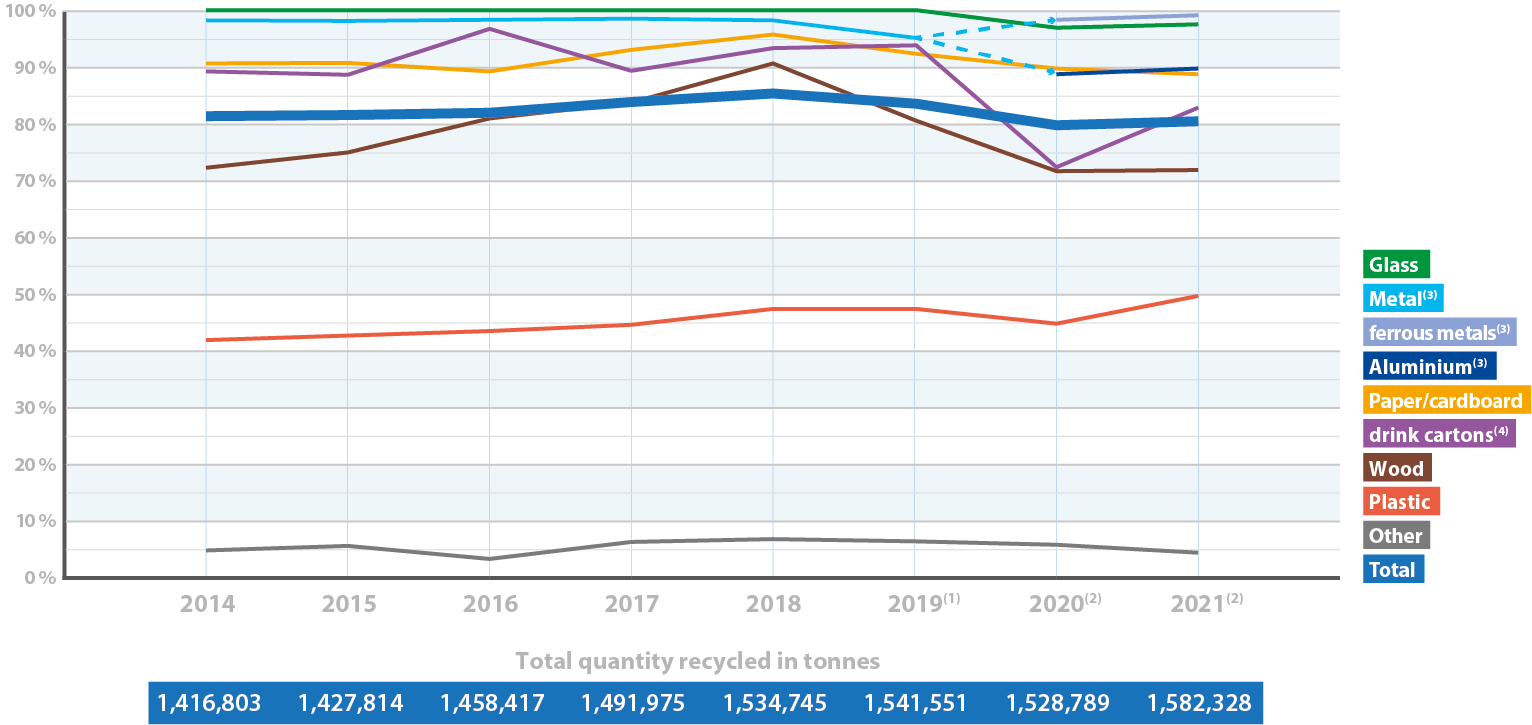
(1) In Section 5.4 of our 2020 Activity Report, the “total recycling” figure for 2019 was miscalculated. The correct rate is shown in this graph.
(2) Recycling figures for the 2020 reporting year have fallen as a result of the new European calculation method for recycling and an improved estimation of the Belgian market as a whole. Consequently, the rates from 2020 onwards are only marginally comparable with those for previous years. The drop in plastic recycling rates is partly offset by the introduction of the new blue bag (all plastic packaging instead of just bottles) for household plastic packaging and by improved monitoring of recycling outside the EU in the case of industrial and commercial plastic packaging.
(3) Since the 2020 reporting year, the metal stream has been separated into a ferrous metal fraction and an aluminium fraction.
(4) Since the 2020 reporting year, in the figures reported to the EU, drink cartons have been split into two fractions, for which recycling must be demonstrated separately: paper/cardboard (added to total paper/cardboard) and PolyAl (added to total plastic). In this graph, however, paper/cardboard and plastic streams are shown excluding drink cartons to enable comparison with historical figures, and – as in previous years – drink cartons are reported as a separate material. For 2020, there is a sharp decrease because the PolyAl fraction was not recycled in 2020. The rate picks up again in 2021 because part of the PolyAl fraction was recycled that year.
